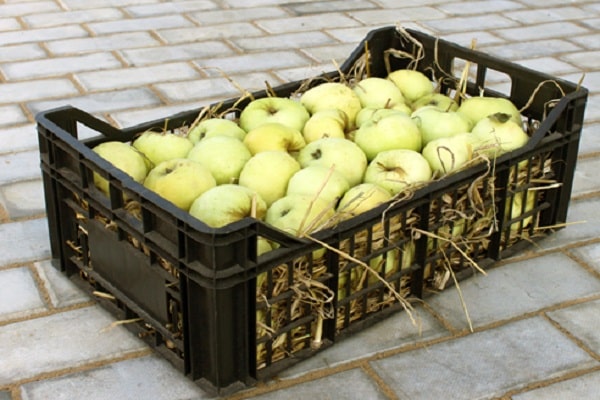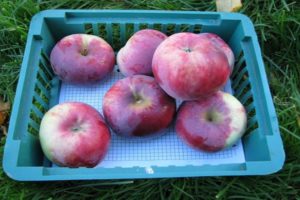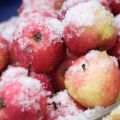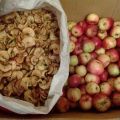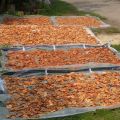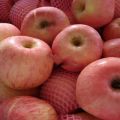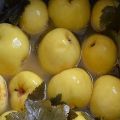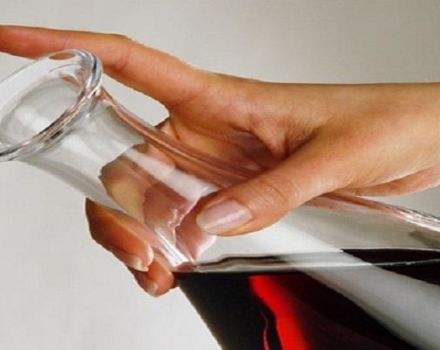How to keep apples fresh for the winter at home
There are many ways and rules on how to store apples for the winter at home. At the first stage, good fruits are selected, a place and storage capacity are selected. Fresh fruits contain a vitamin complex necessary for human health. Therefore, it is important to observe certain conditions in order to preserve nutrients for a long time. But not all apple varieties are designed for winter storage.
What varieties of apples can be stored in winter
For long-term storage, only winter varieties of apples are suitable mainly: Golden, Antonovka, Simirenko, Melba, Idared, Zhigulevskoe. Harvesting from these apple trees begins at the end of September and ends before October 9. During these periods, the fruits gain sugar content and fully ripen. Do not collect them earlier or later than the due date. At a temperature of -2 to +3 degrees, fruits remain fresh for 6.5 months, while the taste and benefits are preserved.

Autumn apple varieties are stored less - about two months, provided that the air temperature in the store is 0 degrees. Popular autumn varieties of apples include: Macintosh, Spartak.
Necessary conditions for preservation
To preserve the taste and benefits of fresh fruits for a long time, certain conditions are created. Particular attention is paid to the container in which the fruits will be stored, the temperature and humidity level in the room, as well as the timing of cleaning:

- The optimal temperature range for storing the harvested crop is within -3 ... + 4 degrees. With such cool air, apples do not freeze and do not spoil for a long time.
- As a container for storing crops, you can choose wooden or plastic boxes, wicker baskets. The main thing is that there are many holes along the entire perimeter of the container. Cannot be stored in iron containers.
First, large fruits are placed at the bottom of the selected container, at the very top there should be a row of small apples. By observing this rule, it is possible to avoid damage due to heavy pressure.
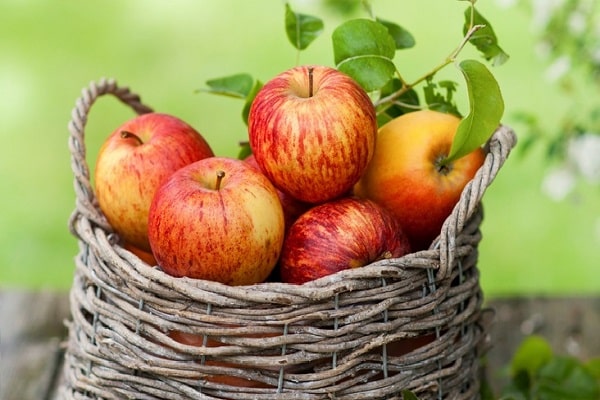
Council. Do not store apples nearby with potatoes. You should not choose straw for storage, it gives an unpleasant taste and smell to the fruit, and also reduces the shelf life.
A properly organized place is a guarantee of a long shelf life of the harvested crop without diseases, pests and decay.
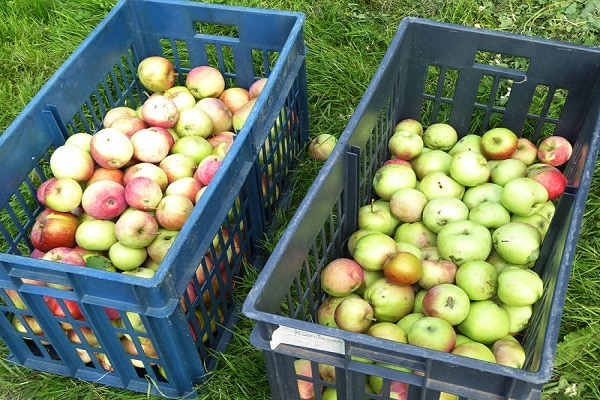
Sorting
Collecting fruits that will go to winter storage should be done manually. A fruit picker will help to cope with a large amount of harvest. Each plucked apple should be examined from all sides. There should be no dark spots, damage and traces of pests. Such fruits can be dried by cutting off the spoiled part.
The selection of apples for storage involves several stages:
- Inspection of the surface of apples and detection of spoiled specimens.
- The selected fruits are placed in a cool place for 10 days.
- After staying in a cool room, a second examination is carried out.
- At this stage, a container for laying fruits is selected.
Council. It is not recommended to remove the stalk from apples, as it helps to increase the shelf life of the product.
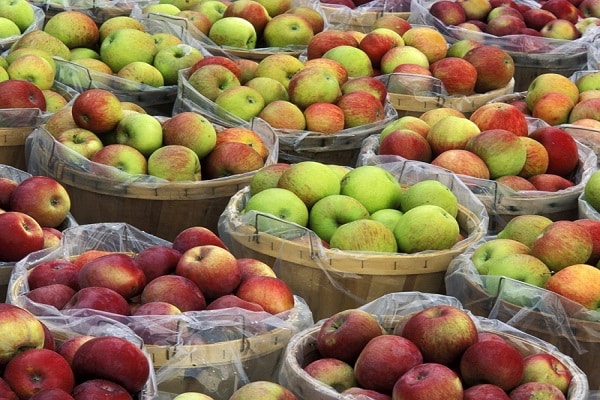
Storage locations
The best place to store crops is considered to be a cellar, basement, storage room, attic or balcony. The main thing is to maintain optimal temperature and humidity so that the apples do not freeze or, conversely, do not rot from the heat. The humidity level in the room where the crop is stored should be kept at around 86-95%.
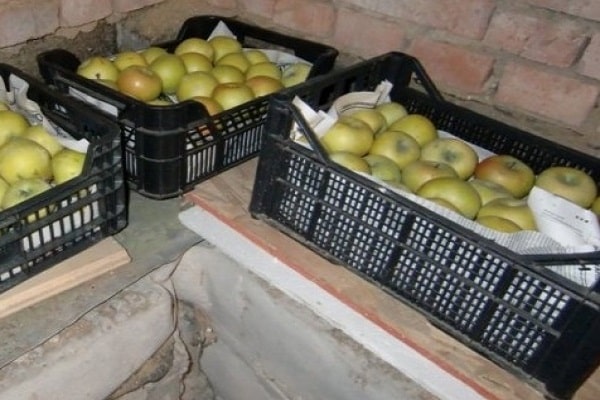
Treatment
Apples on the surface have a waxy layer that naturally keeps them from being damaged by pests and disease. But some experienced summer residents are reinsured and carry out additional processing:
- You can process it with an alcoholic solution based on propolis. In 100 ml of alcohol, 20 g of propolis are diluted. The product is pre-placed in the refrigerator, so that later it is easier to grind with a grater.
- It is recommended to hold the apples in a calcium chloride solution for a few seconds. Only after this treatment, the fruits are thoroughly washed with warm water and soap before use.
- Each fruit is carefully greased with glycerin. After complete drying, they begin to lay in the prepared container.
- It is helpful to dip each fruit in melted paraffin wax. In this form, they will lie for many months, retaining their juiciness and taste.
By spending a little more time and effort on pre-treatment, gardeners will get a good result that will delight all family members and guests throughout the winter.

Optimum humidity and temperature
It is important to have information at what temperature it is possible to preserve all the beneficial trace elements and the taste of the pulp. As already mentioned, the optimal temperature is considered to be 0 degrees. Valid lower limits are -4 degrees, upper - +4 degrees.
At an air temperature above +4 degrees, fruits begin to secrete a special substance in large quantities - ethylene. This causes early spoilage of the crop. If the temperature is too low, below -2 degrees, the pulp freezes.
The humidity in the room should be high. Ideally, humidity should be between 85-95%. In the event that the fruits become lethargic, a container with water should be brought into the room where the crop is stored.
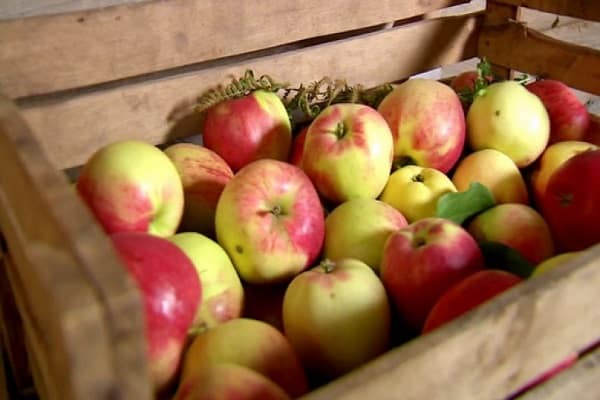
Where to store fruits at home
Each summer resident chooses independently where it is more convenient for him to store the harvested crop. It can be a separate barn, cellar, basement. In the absence of such premises, a storage room, an insulated balcony or loggia is suitable.
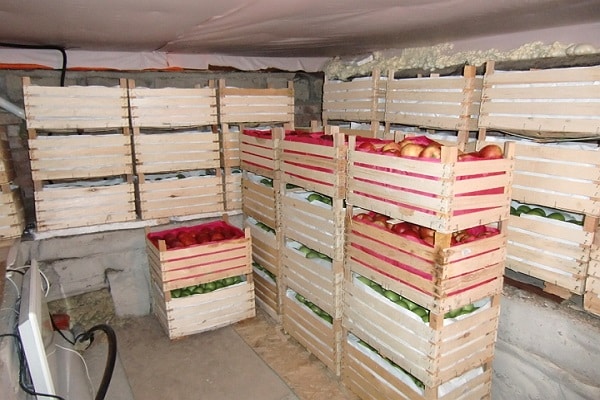
On the balcony and loggia
The harvest harvested from apple trees can be successfully stored on the balcony and loggia, but provided that they are glazed. If the balcony is insulated, then boxes and racks are quite suitable for storage. They take up little space and can hold a lot of fruit.
Shelves look like shelves attached to the wall, on which boxes are placed. Shelving with drawers is a good option.

In the closet, in the hallway, on the windowsill
In an apartment, you can store the harvested crop in boxes, but you will need to allocate a lot of space for them. Therefore, the best option would be to distribute the apples in plastic bags. No more than 2 kg of product is placed in each bag and holes are made for air.
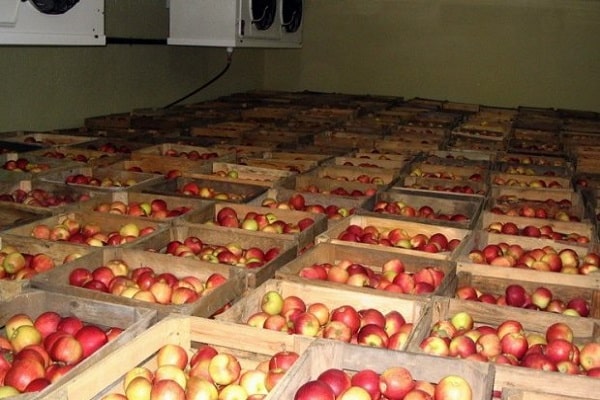
In a refrigerator
A refrigerator is considered a convenient and simple option for storing fruit. Winter varieties are stored for up to several months. The only problem that summer residents face is the small size of the refrigerator and the lack of a sufficient number of compartments in it.
Rules for storing apples in the refrigerator:
- the crop should be moved immediately after harvest;
- fruits do not need to be washed and wiped first;
- fruits are sorted into 3 kg plastic bags;
- holes are made in the bags for ventilation;
- each variety has its own conditions and shelf life, so they cannot be mixed.
If there is a need for longer storage, then heat treatment is carried out first. The fruits are kept indoors at 28 degrees for three days. These conditions favor the removal of ethylene from the pulp.

In the cellar
The cellar has the best conditions for long-term storage of apples for the winter, but it must be prepared in advance:
- the entire room inside the cellar (walls, floors, boxes) is disinfected;
- it is better to whitewash the walls;
- remove plant residues and other debris;
- provide sufficient air permeability inside;
- set the desired temperature and humidity.
Council. If the air humidity in the cellar is increased, then a tub of lime is installed. At low humidity, it is recommended to place containers with water.

In the freezer
You can store fruits in the freezer whole or chopped:
- Apples as a whole are washed, dried, cored and stem removed. Frozen food is more suitable for adding to baked goods.
- A frozen product in the form of slices is suitable for various baked goods. The rind can be peeled or left on.
- A good option is to make applesauce, which is then frozen.
Frozen fruits retain all their useful components by 90%, but provided that all the rules have been followed.
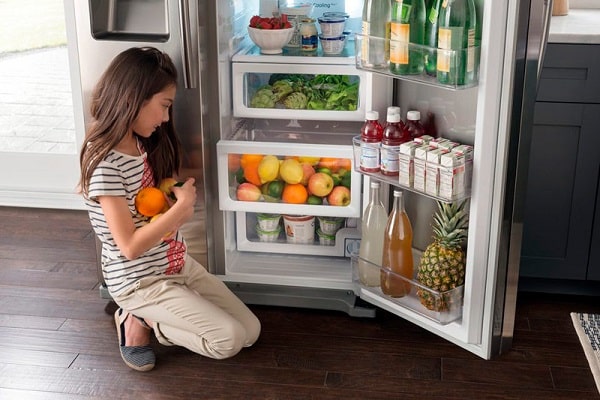
In boxes
A simple storage option is to put the crop in plastic or wood boxes with many openings for air passage. At the bottom of the box, white paper is lined, on which apples are neatly laid out. It is advisable to repeat a layer of paper after each row. It is allowed to stack in 5-8 rows.
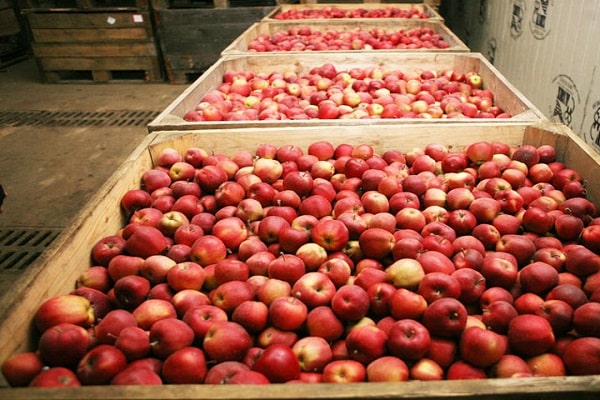
On racks
A convenient option is to stack the harvested apples on racks. This option is especially suitable for summer residents who have gathered a large harvest. It is better if the racks are sliding.
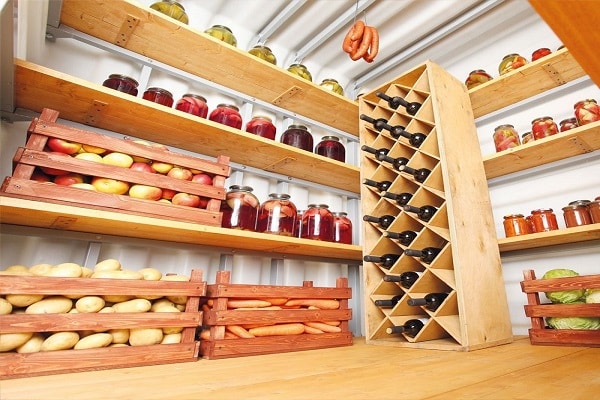
Ways of packing apples for winter maturation
There are many ways to lay apples for the winter. Each gardener chooses the most convenient and suitable option. The basic rule is that every 12-14 days you need to check the harvest harvested for storage and remove damaged fruits on time.

Paper wrapping
The method in which each apple is wrapped in newspaper or paper will take more time, but the spoiled product will not affect the neighbors. When packing in a container, make sure that the stalk is turned up. The box can be of any depth, as long as it is breathable. It is permissible to make from 6 to 8 rows.
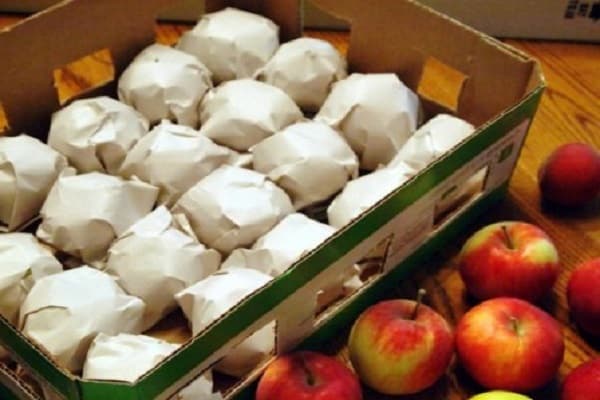
Sand sprinkling
Pouring sand over the apples will prevent them from freezing. Dry and clean sand is poured into a cardboard box. It is advisable to mix it with ash. The height of the embankment should be at least 3 cm. Then the apples are laid out so that the sides do not touch. Cover again with a layer of sand and ash. Up to three rows of harvested fruits are allowed in the box.
Apples are well stored in onion husks, wood chips, dry birch leaves, and you can also choose moss. Each row of apples is sprinkled with the selected component.
An additional layer keeps the temperature and humidity at the same recommended level. In addition, the smell of these ingredients repels pests and protects against many infections.
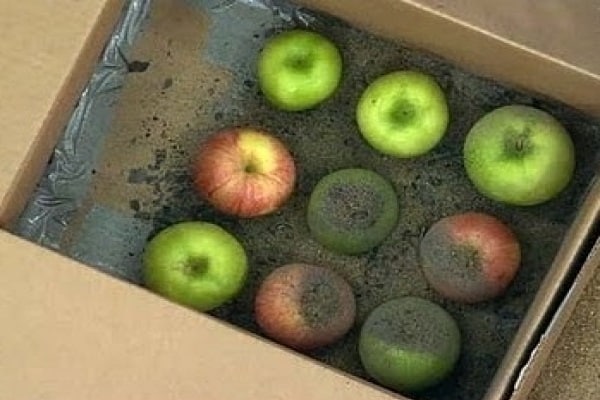
In polyethylene
Good reviews about the option of storing apples in polyethylene.The material allows you to maintain juiciness and sugar content in the pulp due to the slowdown of gas exchange. No more than 4.5 kg of apples are placed in each plastic bag. Then, with a sharp object, several holes are made over the entire surface of the bag to allow air to penetrate.
You can pre-distribute the apples on a dense pallet and place the crop in a plastic bag with it.
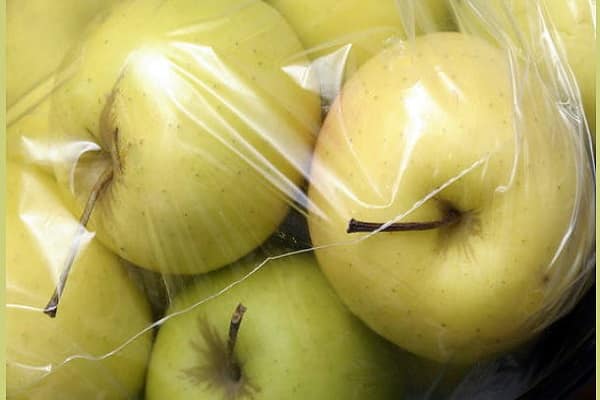
Causes of premature spoilage and methods of dealing with them
To prolong the freshness and taste of the harvested fruits for a long time, a number of recommendations are followed:
- pick the fruits, preferably by hand, starting from the lower tier of the tree;
- it is important to comply with the recommended collection times;
- apples intended for long-term storage are harvested 1.5 weeks before full ripening;
- harvest in dry, clear weather;
- you can not pluck the stalk;
- the surface protective layer on the fruit should not be washed off.
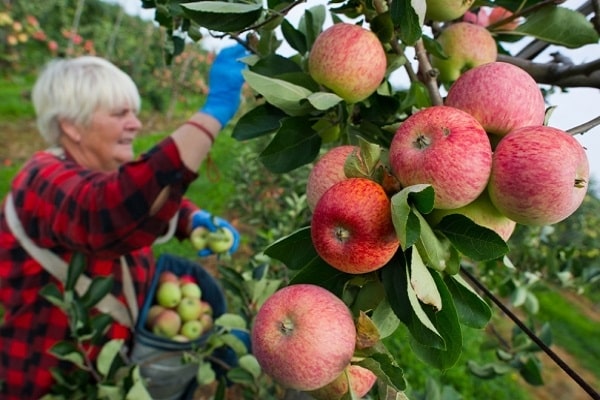
The following adverse factors can lead to premature rotting of products:
- improper fertilization (not adhering to dosage and timing);
- excess nitrogen and potassium in the soil;
- lack of calcium in fruits;
- getting into a container with a crop of damaged, rotten, infected specimens;
- cold summer, long rains;
- failure to comply with storage conditions.
Apples must be properly picked, selected, processed and placed in special containers. The conditions must also meet the basic requirements. In this case, it will be possible to extend the shelf life of the product.
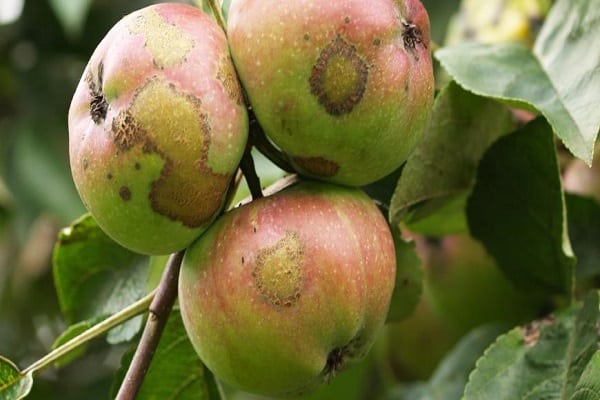
Shelf life of apples
How long the crop will be stored depends on many factors: on the variety, temperature and humidity in the room, the method of harvesting and the quality of the fruits themselves:
- Summer varieties of apples are stored for no more than a month, but provided that the temperature is from +3 to +7 degrees.
- Autumn species retain their qualities for two months, but only at temperatures from 0 to +6 degrees.
- Winter apple varieties retain flavor, juiciness and benefits for 6.5 months. The temperature should not be below -4 degrees and above +4 degrees.

Cut apples will last over 11 hours in the refrigerator. You can extend the time by placing the slices in a plastic bag with holes. In the bag, the appearance of the cut pieces will not deteriorate during the day.
The shelf life is influenced by the degree of maturity of the harvested crop. Unripe fruits will stay for more than 4 months if the required temperature is observed. Ripe fruits start to deteriorate after a few weeks. At temperatures above +10 degrees, any apples begin to wither.
